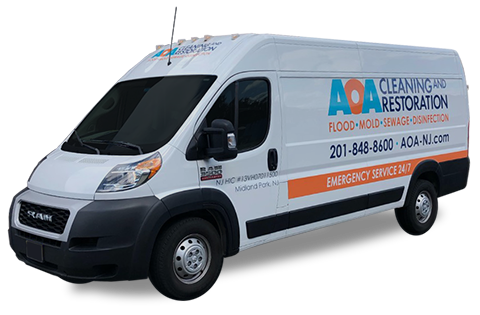Ever seen a stain or peeling paint on your ceiling? These signs might be telling you something important about your home’s roof. But how do you know if your roof is damaged? Learning to spot roof water damage signs is key to avoiding bigger problems later.
Identifying roof leaks and checking your attic for leaks are important steps. Knowing the signs of ceiling water damage helps you act fast. This guide will cover common roof water damage signs, their causes, and what to do next.
Key Takeaways
- Water stains or mold on ceilings and walls can be initial signs of roof water damage.
- Peeling paint or rotting wood around skylights may also indicate leakage.
- A musty smell often accompanies mold growth, suggesting possible water damage.
- Cracked or missing shingles, damaged flashing, and blocked gutters are physical signs of water intrusion.
- Checking your attic for leaks means looking for dark, wet spots or damaged insulation.
Common Signs of Water Damage in the Roof
Spotting water damage in your roof early can save you a lot of money and prevent bigger problems. Look out for roof leak symptoms to catch issues before they get worse. Stains on your ceiling, which can look yellowish, brown, gray, or black, are signs of water damage.
These stains might lead to a sagging ceiling if not fixed. When checking your roof, watch for missing, cracked, or damaged shingles. These signs often mean water is getting into your home.
Also, if you see shingle granules in your gutters, it could mean your roof is wearing out. If parts of the roof feel soft or make creaking sounds, it’s another warning sign.
Other signs include mold on exterior walls or watermarks on the fascia. These signs point to roof water damage. Ignoring them can cause serious damage to your home. So, it’s key to spot and fix these issues early.
Causes of Roof Water Damage
Roof water damage comes from many sources, both outside and inside. One big cause is when seals are not done right, letting water get through. Cracked flashing and broken shingles also let water in.
Ice dams are another big problem. They happen when snow melts and freezes again at the roof’s edge. This stops water from draining right and causes it to back up under the shingles. Clogged gutters don’t let water flow off the roof, making it pool and go through the roof.
Inside, issues like wrong skylight installation can let water in around the edges. Condensation in the attic can also cause moisture and damage. A cracked chimney can let water in, causing mold or water stains inside.
Things like overhanging tree branches can hit the roof and cause damage. Algae on the roof can also wear it down over time, making it more prone to water damage.
How to Inspect Your Roof for Water Damage
Checking your roof for water damage means looking at both inside and outside your home. Start by doing a DIY roof check in the attic. Use a flashlight to spot dark spots, mold, or damaged insulation. These signs could mean water has gotten into your home.
Then, carefully check the ceilings and walls, especially after heavy rain or strong winds. Watch for stains or mold, which might show leaks where shingles aren’t working right. Outside, it’s important to closely inspect the roof. Look for missing or broken shingles, corroded flashing, and any soffit problems.
If you can’t see or reach certain areas, like small cracks under the flashing, get a pro to check. Experts have the right tools and knowledge to thoroughly inspect your roof. They can make sure all water damage is found and fixed.
How to Tell If There Is Water Damage in the Roof?
Spotting water damage in your roof early can save you a lot of money and trouble. It’s important to check your roof for leaks often. Look out for these signs:
- Ceiling Stains: Yellow or brown stains on your ceiling are a clear sign. Regular checks can stop these problems before they get worse.
- Mold Growth: Leaks create a great place for mold to grow. If you see mold, you need to fix the moisture issue fast.
- Musty Odors: A musty smell in your attic or rooms under the roof means there might be hidden water damage.
Regular roof checks not only find current issues but also stop future ones. Checking for ceiling water damage and mold can keep you and your home safe from health and structural problems caused by water.
Preventing Roof Water Damage
Keeping your roof safe from water damage needs regular upkeep and careful checks. A key step is to clean gutters and downspouts often. This lets water flow away from the roof, lowering the chance of water damage.
Trimming trees near your roof is also vital. Overhanging branches can fall and harm the roof. Leaves can clog gutters and downspouts too.
Setting a regular schedule for cleaning gutters and trimming trees helps keep your roof in good shape. Getting experts to check your roof now and then is also smart. They can spot issues like missing shingles or corrosion early.
These steps not only make your roof last longer but also keep your home safe.
Maintaining your roof’s health means doing a few important things:
- Regularly clean gutters and downspouts for good drainage.
- Trim overhanging tree branches to avoid debris and damage.
- Have experts inspect your roof to find and fix problems early.
By doing these things often, you can greatly reduce the risk of roof water damage. This helps your roof last longer and keeps your home safe.
Repairing Water Damage in the Roof
When you find roof water damage, start by finding and stopping the water leak. This often means fixing gaps or cracks in shingles and flashing. It’s important to act fast to stop more damage.
After fixing the leak, you need to restore the water damage. This means drying out wet areas and taking out any materials damaged by water. Inside, you might need to replace parts of walls or ceilings that got wet.
Getting rid of mold is also key in fixing the damage. Mold grows fast in damp places and can be harmful to health. It’s important to safely remove mold and dry the area well to stop it from coming back.
- Shut off the water source immediately to prevent further damage.
- Dry out affected areas and remove damaged materials inside the home.
- Repair or replace damaged shingles, flashing, and gutters on the roof exterior.
- Conduct thorough mold remediation to eliminate any health hazards.
In serious cases, you might need a pro for roof leak repair. Experienced contractors can offer lasting solutions. If you need a new roof, using tarps can help keep out water until you can fix it for good.
Homeowners should call their insurance company quickly to talk about roof damage repairs. Always put safety first.
Conclusion
Managing roof water damage is key to avoiding big repairs and keeping your roof in good shape. Spotting signs like water stains, mold, or damaged shingles early helps catch problems before they get worse. Regular checks and upkeep, especially after big weather events, are vital for handling roof water damage well.
Knowing what causes water damage, like bad installation or old age, lets homeowners act early. Keeping gutters clear and fixing small issues fast can lower the chance of big problems. Taking these steps helps protect your investment and makes your roof last longer.
Deciding whether to fix roof leaks yourself or call a pro depends on the damage. Small leaks might be fixed with DIY kits from stores. But for big damage, a skilled roofing contractor is best to fix things right and stop future problems.
Handling roof water damage well means keeping an eye on your roof, acting fast on problems, and doing regular maintenance. This approach keeps your roof strong, long-lasting, and saves you from big repair bills later.




















